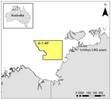 Statoil is ceasing production on its Huldra platform today (September 3), the company announced. Huldra is the first gravity-based Statoil-operated installation in the North Sea to be shut down permanently.
Statoil is ceasing production on its Huldra platform today (September 3), the company announced. Huldra is the first gravity-based Statoil-operated installation in the North Sea to be shut down permanently.
The platform, in production license (PL) 051/052, has produced gas and condensate since 2001, and has operated for six years more than its original development plan.
The Huldra field has produced a total of 17.5 billion cu m of wet gas and has a recovery rate of 80%.
Image: The Huldra platform. Photo by Kenneth Kjeldsen, Statoil.
In peak productoin, Huldra produced more than 11MMcu m/d and 4000cu m/d of condensate. It was also the first Statoil-operated platform without permanent staffing, being operated from the Veslefrikk B platform about 16km away.
Worked started some years ago to prepare a concept, plans and impact assessment of the cessation of production at Huldra. This has included looking at the potential to reuse the platform instead of scrapping it, and the platform was therefore put up for sale in 2011. The project is still actively seeking a solution of reuse.
The Huldra platform will be regularly maintained until the West Epsilon jackup drilling rig arrives in 2016 for permanent well plugging. The field will not be fully decommissioned before 2019 and no later than 2021, said Statoil.
 Huldra was developed with a wellhead platform – the first Statoil offshore installation designed for normally unmanned operation. Gas from Huldra was piped in a dedicated 140km pipeline to the Heimdal field for processing and onward transmission by pipeline to continental Europe. Condensate was piped to Veslefrikk for processing.
Huldra was developed with a wellhead platform – the first Statoil offshore installation designed for normally unmanned operation. Gas from Huldra was piped in a dedicated 140km pipeline to the Heimdal field for processing and onward transmission by pipeline to continental Europe. Condensate was piped to Veslefrikk for processing.
Statoil proved the field in 1982, and development work began in the spring of 1999. Aker Verdal in mid-Norway built the platform jacket, which was towed out and placed on the field in the summer of 2000. The Mærsk Gallant rig started drilling production wells immediately afterwards.
Constructed at Kværner's Rosenberg yard in Stavanger, the Huldra topside was shipped out and installed on the jacket in the spring of 2001.
Originally a field with high-pressure and high-temperature, pressure has dropped in the last 10 years and a compressor has been required for gas export and multiphase pumps for liquid export.
The field has six producing wells in two streams; gas to Heimdal through the Huldrapipe, and condensate to Veslefrikk for processing and export via the Sture terminal.



